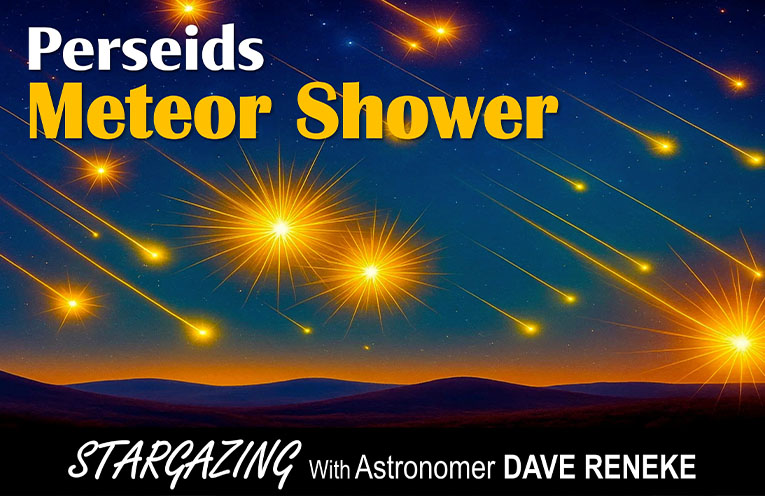EVERY year around mid-August, the sky puts on one of its most spectacular performances – the Perseid meteor shower.
A favourite for stargazers and amateur astronomers alike, the Perseids are famous for their brilliance, speed, and sheer number of meteors.
This isn’t just a quiet trickle of falling stars – it’s a fireworks show written in the stars themselves.
So, what causes this celestial spectacle?
It all starts with Comet 109P/Swift-Tuttle, a massive, icy traveller that orbits the Sun once every 133 years.
As this ancient comet loops around the Sun, it leaves a dusty trail of debris in its wake – tiny particles no bigger than a grain of sand.
Once a year, like cosmic clockwork, Earth ploughs through this debris field, and when those particles hit our atmosphere at high speeds, they burn up, creating streaks of light we call meteors.
That’s the Perseid meteor shower in a nutshell.
And this year, it’s already underway but more active from July 17 to August 24.
The meteors seem to radiate from the constellation Perseus, hence the name “Perseids”.
Some of the best viewing opportunities may come before dawn on August 17, when the Moon is less of a bother and the shower could still be quite active.
Those pre-dawn hours from midnight to around 4am are your golden hours – literally – as Earth rotates to face directly into the comet’s debris trail, giving you a front-row seat to the meteor magic.
What makes the Perseids so thrilling?
Speed, brightness, and colour.
These meteors travel at around 59 km per second and are often brilliant enough to be seen even in semi-lit skies.
Some leave glowing trails that linger.
Others burst as fireballs, sudden, intense flashes that briefly outshine everything else in the sky.
And unlike the typical white streaks of most meteors, Perseids can flash in yellow, orange, red, or even blue, depending on the minerals they contain.
Here are some quick tips to make your Perseid meteor viewing truly unforgettable: aim for the magic hours between midnight and dawn, when the sky is at its darkest and the meteor radiant is high overhead.
Escape the glare of city lights and seek out a dark, open spot; think countryside paddocks or coastal headlands.
If the moon’s up, sneak it behind a tree or building to cut the glare.
Ditch your phone (yes, really!) and give your eyes a good 20–30 minutes to adjust to the dark.
Bring a reclining chair or cosy blanket, rug up against the chill, and maybe bring a thermos of hot chocolate or a glass of wine.
It’s the perfect recipe for a night of shooting stars and sky-bound wonder.
Despite the bright moon, the Perseids still promise a stunning show.
So, step outside, look up, and enjoy the magic.
After all, who wouldn’t want to see the sky come alive with ancient comet dust dancing in our atmosphere?
By Dave RENEKE, Astronomer



